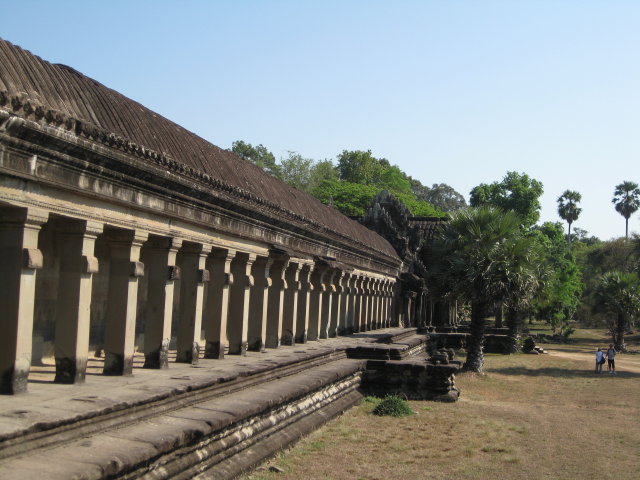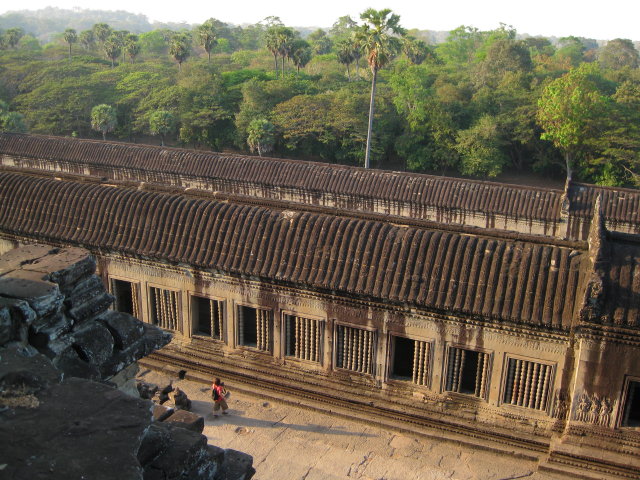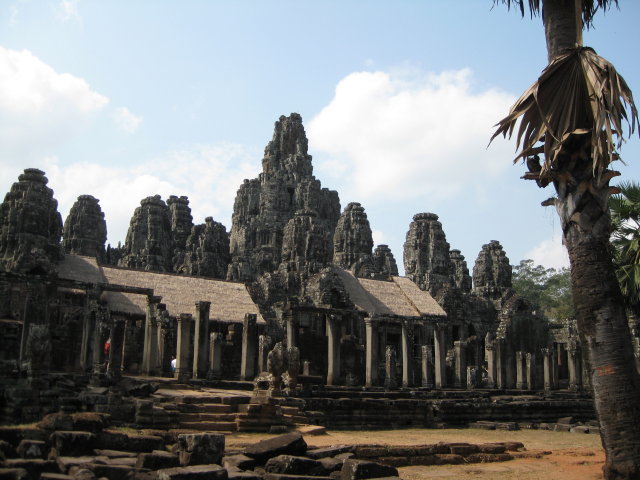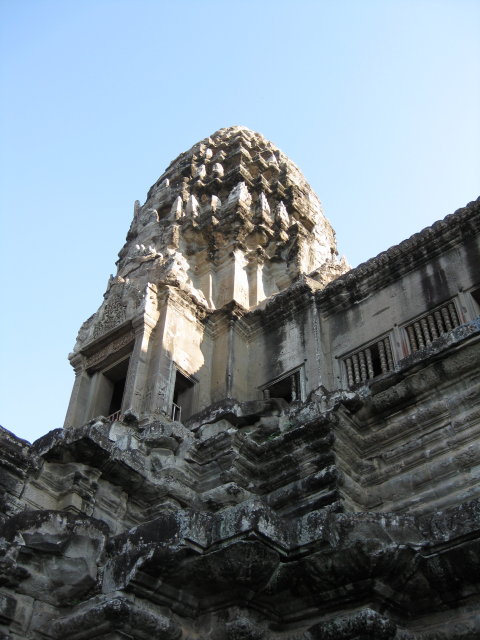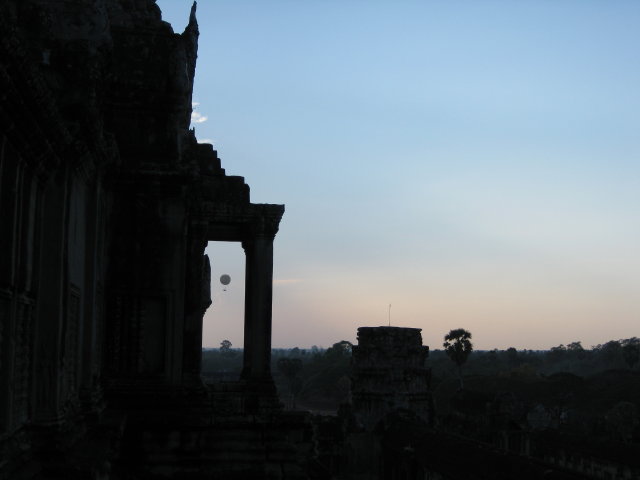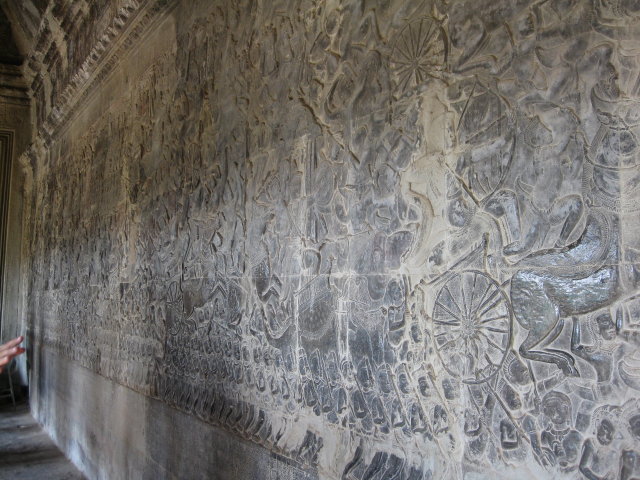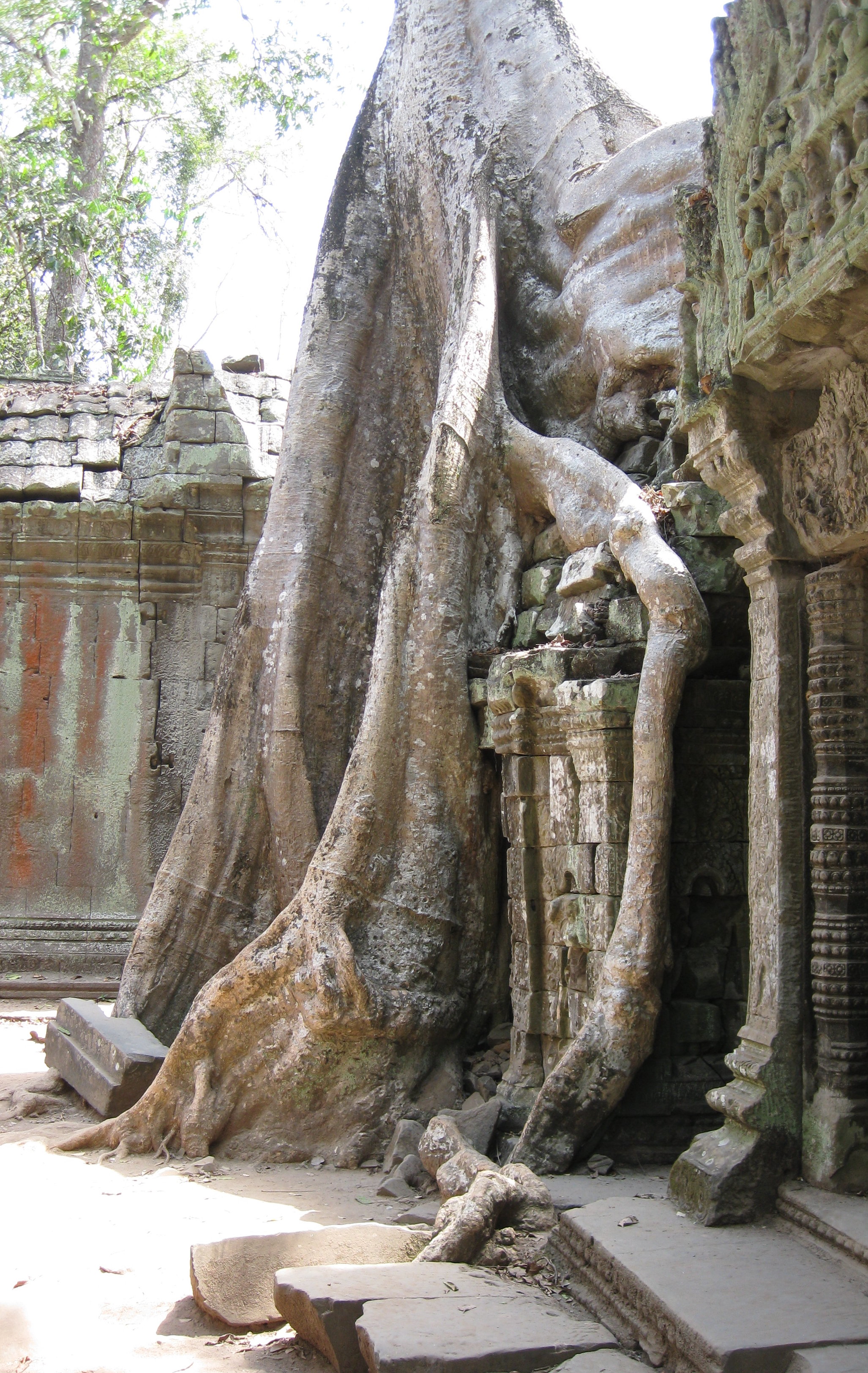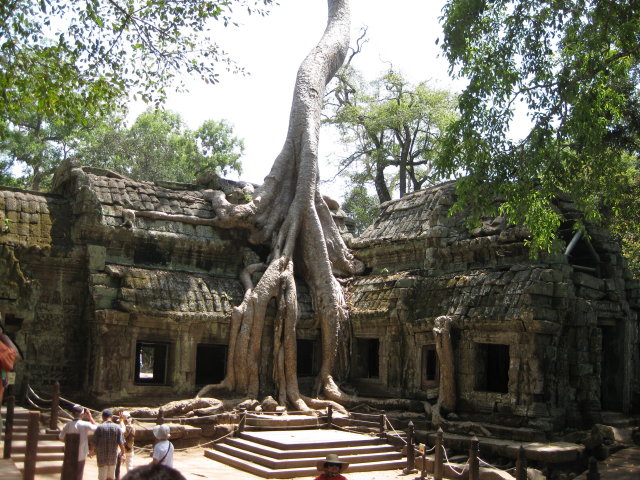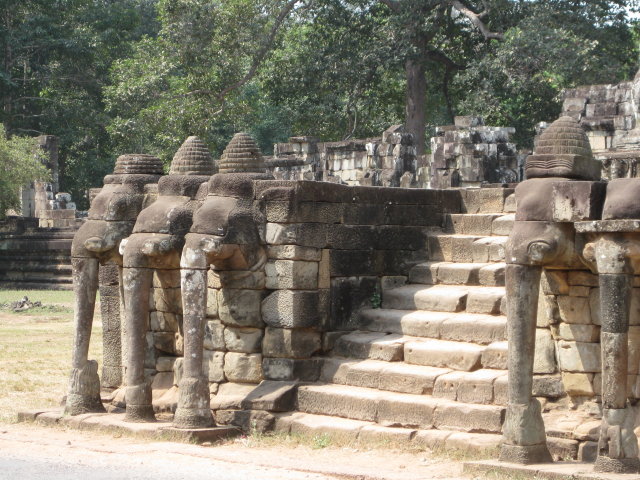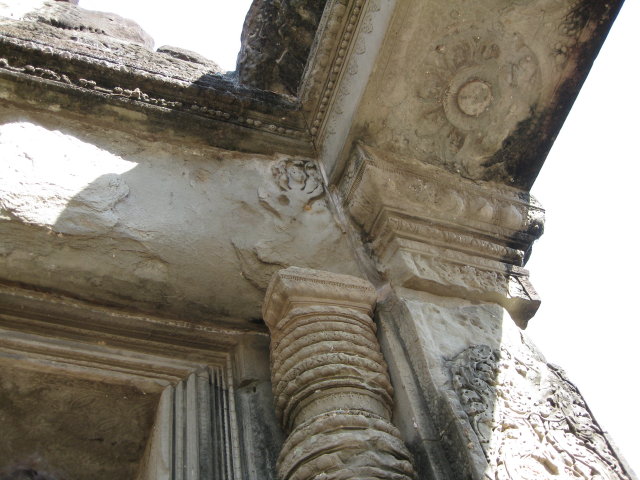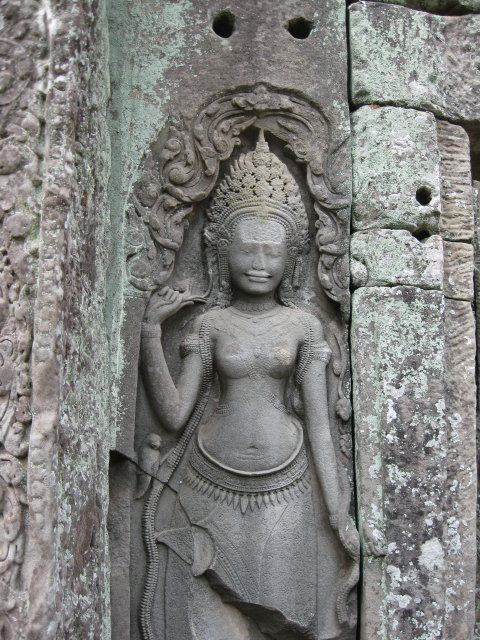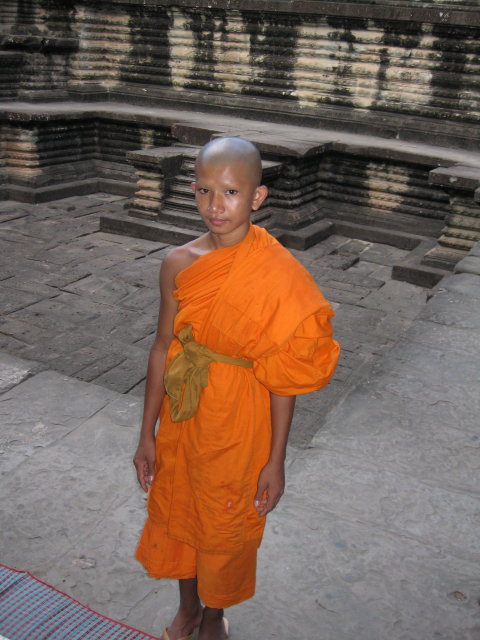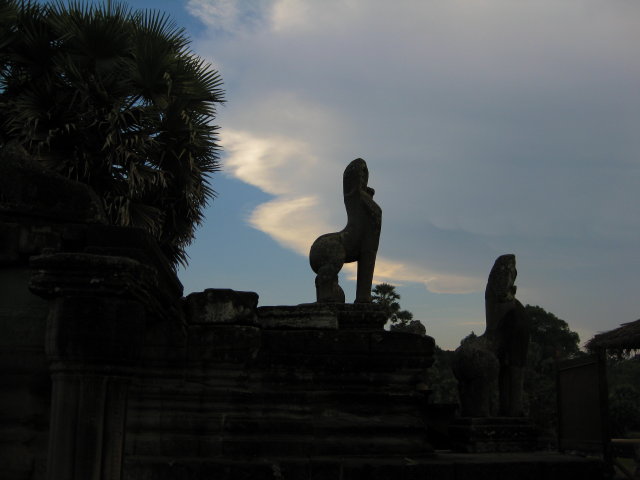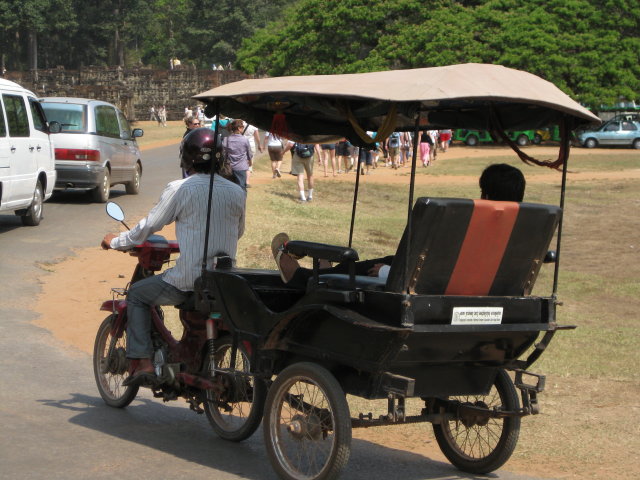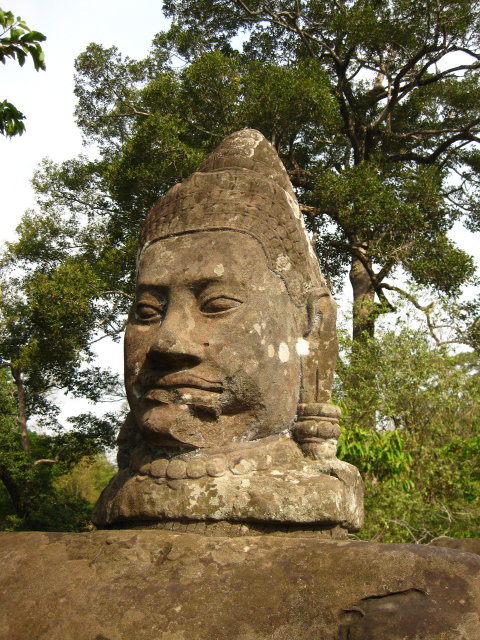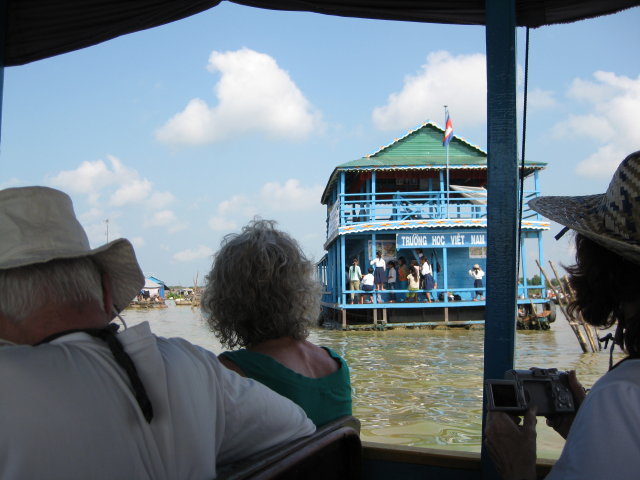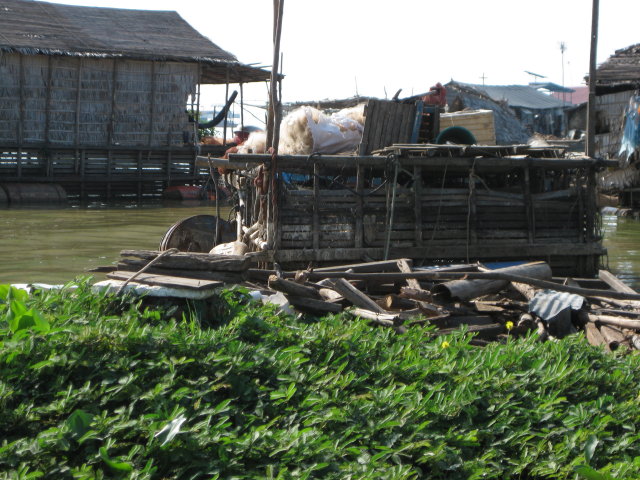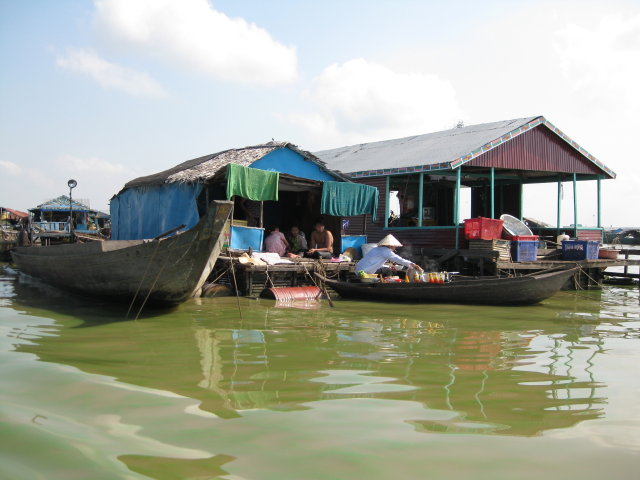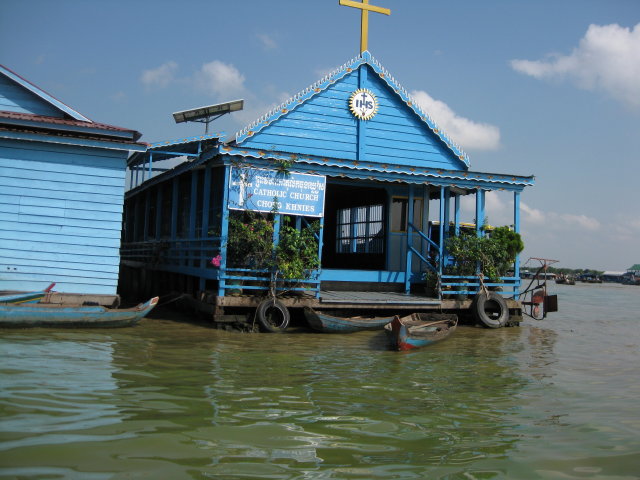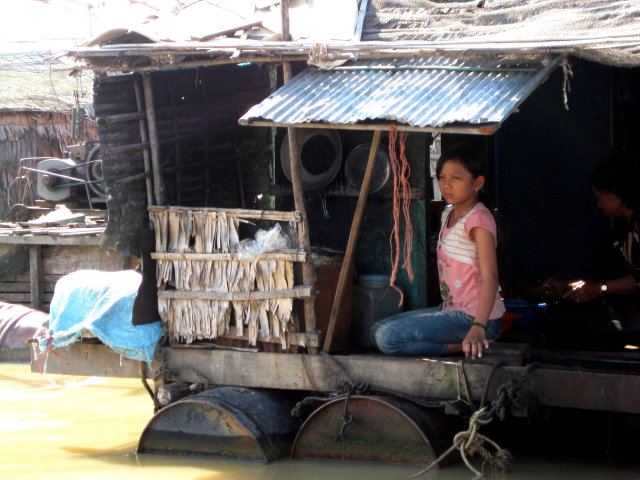All of us on the ship were required to select and register for longer, overnight trips from a big catalog of choices nearly three months before the start of the voyage. For the more expensive trips, the choice was difficult and many of us were working so many hours in advance of leaving for many months that finding the time to research the offerings thoroughly was not possible. I am lucky to have chosen to go to Cambodia and see the temples of Angkor, one of the wonders of the world. This trip was terrific and it was worth every one of the shekels I invested in it. I took over 300 photographs in three days and could have taken many more—or many fewer if I were any good!
On the other hand, I have written Chapters 9 and 11 of this journal before I can even think about writing this one. There is just too much to say and yet not enough. Perhaps I should just try to learn how to assemble the best photos in a meaningful way but, then, I’d never get the chapter done.
When we attend a Global Studies class on board the ship the week after this trip we learn from a knowledgeable lecturer why the temples of Angkor enthrall visitors but are so difficult to grasp in their entirety. The short answer is that the art and architecture of the temples incorporate elements from both Hinduism and Buddhism. Instead of the soaring spires and strict symmetry of Muslim and Western architecture, they are enmeshed in halls and courtyards closer to the earth and with a “sea of life” depicted on every surface. There is no one “path” through these enormous temple compounds. Instead, all kinds of possibilities, permutations and peregrinations beckon. As Westerners we’re always wondering whether we’ve missed something important but it’s necessary to set that attitude aside at Angkor.
Remarkably, the widespread U.S. bombing of Cambodia during the Vietnam (or, as these countries term it, American) War left Angkor relatively unscathed. But because the plains surrounding the temple compounds were also the battlegrounds of heavy fighting with modern weapons during the time of the Khmer Rouge and Pol Pot’s genocidal rampage throughout Cambodia, today they are also scarred by bullet holes.
Angkor was the capital city of the powerful Khmer empire for six centuries—from AD 802 to 1432 when Phnom Penh became the capital. For nearly three centuries, the jungle covered and reclaimed Angkor’s immense metropolis of 70 temples, tombs and ruins occupying 77 square miles. Of these, Angkor Wat is the world’s single largest religious complex. When I later climb to its top and look out over all of the many buildings and squares, I am struck by how the entire compound resembles Vatican City.
A French naturalist looking for rare plants in the dense vegetation was the first to stumble upon Angkor’s ancient temples in the 1860s. His discovery led to archaeological expeditions, primarily by the French as part of its protectorate, along with a period of reclamation and restoration until the mid 20th century when all efforts ceased due to warfare in both Vietnam and Cambodia. Since the mid 1990s the country has regained both stability and peace and the World Monuments Fund has made huge strides to safeguard the temples in cooperation with the Communist government and figure-head monarchy that rules Cambodia today, with many individual countries sponsoring major work on specific structures. The temples attract millions of visitors each year and have become a significant part of the economy. Mercifully, the world’s attention has also meant that development near the temples has been coordinated, managed and restrained to protect the sites while also allowing local residents to work and market wares to tourists for their own livelihood.
We don’t realize anything of the scale of what awaits us when we fly into Siem Reap but the airport is a surprise because it is brand new—Frenchmen I later speak with tell me it is privately funded—and looks like something from out of the glamorous Caribbean. We are treated to the strangest scene when we get off the plane and go through customs. In addition to the gauntlet of the usual security technology, we finally come to a half-moon counter where we are required to hand our passports to a first clerk, who passes it along to at least a dozen other clerks who inspect and stamp our passports while we watch and until we each pickup ours at the very end of the half-moon counter.
When our guide takes us to our hotel, we are even more impressed to find that we are lodged in an older, very comfortable resort hotel with unbelievably affordable rates for spa services and delicious food at every turn. After lunch we leave the small town of Siem Reap, a wonderful rural community with many markets, parks, and French colonial buildings, to visit the temple grounds and we begin to understand how massive and magnificent they truly are. In torrid temperatures and dripping with sweat, we all nevertheless avidly explore Angkor Wat, Angkor Thom and Ta Prohm for two days. I flag for a while at Angkor Wat on the first day, but finally find a shady spot with a breeze to rest up for the final queue and steep climb to the top of the highest Angkor temple. By the time I get to the top the sun is beginning to set. It’s a shame I am not a more skilled photographer because there is so much to try to show from that elevated point, including a hot air balloon that one of the archaeological teams has sent aloft for aerial measurements.
Back at the hotel that evening I happen to answer a French couple in French when they assume there is no one about who can understand them. With that, I am caught up in conversations with dozens of French people in the hotel, where many of them are lodged while they work in archaeological teams at the temples. They ask for an explanation of the students’ “Semester at Sea” T-shirts and how the program works. Many of them have students on their teams because most French students are required to work abroad in service to their country after graduation. I learn even more about the back story of the temples and development efforts in Vietnam and Cambodia than I am already learning from our guides and shipboard experts.
Angkor Wat is the single largest religious monument in the world, built during the 12th century. Its layout is based upon the Hindu mandala with a five-towered temple rising up three levels and shaped like a lotus bud, part of which is now enshrouded in scaffolding for stabilization work. The central temple represents the abode of the gods and the center of the universe. Outer walls mark the edge of the universe and a wide moat is the cosmic ocean. Intricate carvings and bas reliefs adorn all of the walls for over 600 hundred meters in total.
Ta Prohm is the well known, evocative Buddhist monastery where over 80,000 attendants, 18 high priests and 600 temple dancers once lived. The roots of huge banyan and kapok trees have become interwoven with its stones to the point where they support the structure that remains in the dense, jungle setting. While new vegetation is removed so it will not damage any more areas of stonework, great efforts are made to stabilize these trees. They have become an essential part of the power of the place.
I hate to admit it, but after a next morning visiting Ta Prohm, Thom, Bayon, Baphuon, the Terrace of the Leper King and the Elephant Terrace, I elect to sign up for a $30 special—only available during the daytime hours at the resort while everyone else is at the temples—for a 60-minute massage and a 30-minute facial. It is only the second facial in my entire life and probably only the fourth massage but this opportunity is precisely in my budget range. What can I say? The flesh is weak, particularly in the tropics after walking and climbing for two days. Meanwhile, heartier souls—including nearly all of our outstanding, dedicated students—continue their visit of the smaller temples of Preah Khan, Neak Pean, Ta Som, East Mebon and Pre Rup. That evening we go for dinner to a restaurant tucked behind a private wall along a dusty street with minimalist bamboo walls and water rills that is exceptional for its perfect fusion of French and Cambodian cooking.
The smaller Asian elephants have been a major part of Cambodian culture and they figure prominently in the story of the temples. Special gates and reviewing-stand terraces were constructed with their needs in mind. Today, they also afford tourists the chance make the large circuit around the outer walls of the temple grounds.
Our final day in Cambodia we drive out through the countryside to see floating homes and a local village area surrounding Tonle Sap Lake. Everything floats: hospital, water treatment station (solar-powered and built by the USAID), schools, gardens, grocery store, scrap piles, theater, dance hall—even a basketball court—while most of the families make their living from fishing. I couldn’t get a photo because the light was too harsh, but one of the most memorable sights I saw was a young man in a rowboat with a computer set on the seat in front of him. Most of the homes have solar panels or small windmills, along with television antennas. The reason they all are afloat is that, when monsoon season comes, they all move closer in to land and, of course, they float higher.
Afterwards we visit the school grounds of Les Artisans d’Angkor. Started by the French and now entirely self sustaining, over 1500 students are apprenticed to master craftsmen for the purpose of continuing arts and crafts of the Angkor region. In addition, their product development, marketing and communication efforts are superb and many in our party leave a good deal of money in their shop for high quality goods of all kinds at very reasonable prices.
Late that afternoon we fly from Siem Reap back to Saigon. We’re full of our journey to Cambodia. Nearly half of the ship has made a trip of some kind to Cambodia—either SAS-sponsored or independently—and we talk so glowingly about our experiences that we elicit trip-envy from those who did not. Everyone expresses interest in visiting Vietnam and Cambodia again—in this life or the next.
The people are unfailingly gracious and go out of their way to be helpful.
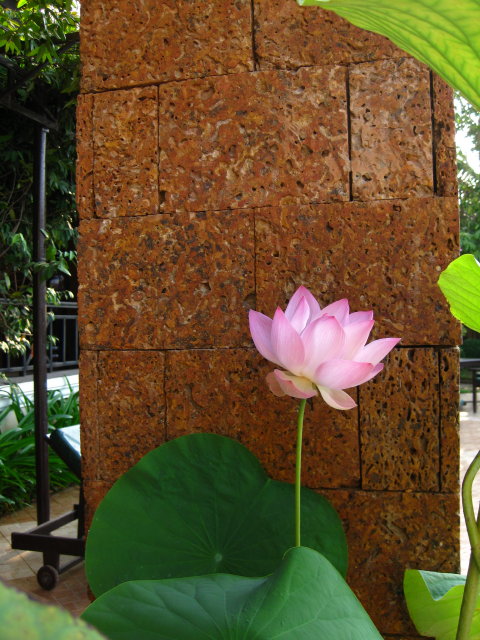
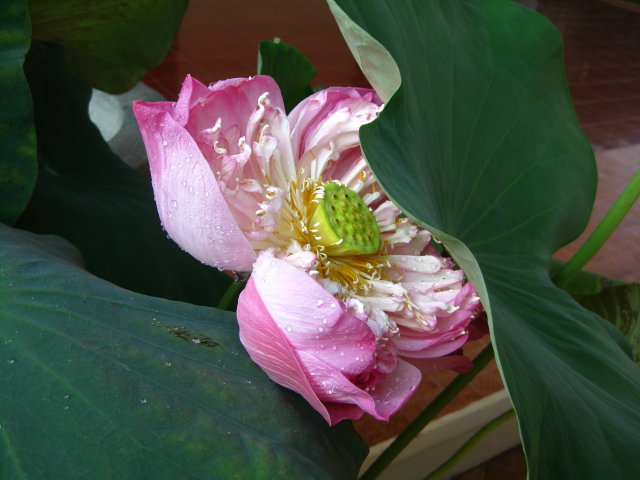 The lotus appears again and again as a motif in the temples and we see large fields of them all around Siem Reap. The blossoms pictured here are in large pots surrounding the pool at our hotel, along with chains of laburnum and many other stunning exotics.
The lotus appears again and again as a motif in the temples and we see large fields of them all around Siem Reap. The blossoms pictured here are in large pots surrounding the pool at our hotel, along with chains of laburnum and many other stunning exotics.



